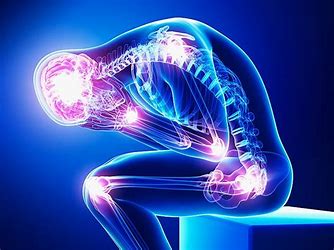Introduction
Chronic pain is a complex and debilitating condition that affects millions of people worldwide. Unlike acute pain, which is a normal sensation triggered by the nervous system in response to an injury or illness, chronic pain persists for an extended period, typically lasting for three months or more. This article aims to provide an in-depth understanding of chronic pain, including its causes, impact on individuals and society, and effective management strategies.
Causes and Types of Chronic Pain
Chronic pain can have various causes and may originate from a previous injury, medical condition, or an unknown source. Some common causes include:
1.1 Musculoskeletal Conditions: Conditions such as osteoarthritis, rheumatoid arthritis, fibromyalgia, and chronic back pain can lead to persistent pain.
1.2 Nerve Damage: Nerve-related disorders like neuropathy, post-herpetic neuralgia, and complex regional pain syndrome (CRPS) can result in chronic pain.
1.3 Persistent Headaches: Migraines, tension headaches, and cluster headaches can cause recurring and long-lasting pain.
1.4 Injury and Surgical Complications: Traumatic injuries, post-surgical pain, and conditions like phantom limb pain may lead to chronic pain.
1.5 Chronic Illnesses: Certain chronic diseases, including cancer, multiple sclerosis, and inflammatory bowel disease, can cause ongoing pain.
Impact of Chronic Pain
2.1 Physical and Emotional Toll
Chronic pain can significantly impact an individual’s physical and emotional well-being. Constant pain can lead to reduced mobility, sleep disturbances, fatigue, and decreased quality of life. It often contributes to emotional distress, including anxiety, depression, frustration, and social isolation. The combination of physical and emotional burden can create a vicious cycle, further exacerbating the pain experience.
2.2 Economic Burden
Chronic pain imposes a substantial economic burden on individuals and society as a whole. It leads to decreased work productivity, increased healthcare utilization, and higher healthcare costs. Additionally, individuals with chronic pain may require ongoing medical treatments, rehabilitation services, and medication, adding to the financial strain.
Management Approaches for Chronic Pain
3.1 Multidisciplinary Approach
The management of chronic pain often requires a multidisciplinary approach involving various healthcare professionals, including physicians, pain specialists, physical therapists, psychologists, and occupational therapists. This collaborative approach aims to address the physical, psychological, and social aspects of chronic pain comprehensively.
3.2 Medication and Interventions
Medication can play a role in managing chronic pain, including analgesics, nonsteroidal anti-inflammatory drugs (NSAIDs), opioids (in select cases), antidepressants, and anticonvulsants. However, medication alone is rarely sufficient and is often combined with other interventions such as nerve blocks, physical therapy, occupational therapy, and transcutaneous electrical nerve stimulation (TENS).
3.3 Psychological Therapies
Psychological therapies are crucial in chronic pain management. Cognitive-behavioral therapy (CBT) helps individuals develop coping strategies, change negative thought patterns, and improve overall well-being. Other approaches such as mindfulness-based stress reduction (MBSR), relaxation techniques, and biofeedback can also be beneficial.
3.4 Lifestyle Modifications
Adopting healthy lifestyle habits can contribute to chronic pain management. Regular exercise, maintaining a healthy weight, improving sleep hygiene, managing stress, and following a balanced diet can help alleviate symptoms and enhance overall well-being.
Support and Self-Management
Living with chronic pain can be challenging, but support networks can provide invaluable assistance. Joining support groups, seeking peer support, and engaging with online communities can help individuals share experiences, gain insight, and receive emotional support. Self-management techniques, such as pacing activities, setting realistic goals, and maintaining a positive mindset, empower individuals to actively participate in their pain management.
Conclusion
Chronic pain is a complex condition that significantly impacts individuals physically, emotionally, and economically. Understanding its causes, effects, and management strategies is crucial for both healthcare professionals and individuals living with chronic pain. By adopting a multidisciplinary approach, combining various interventions, and making lifestyle modifications, individuals can effectively manage their chronic pain, improve their quality of life, and regain control over their well-being.

